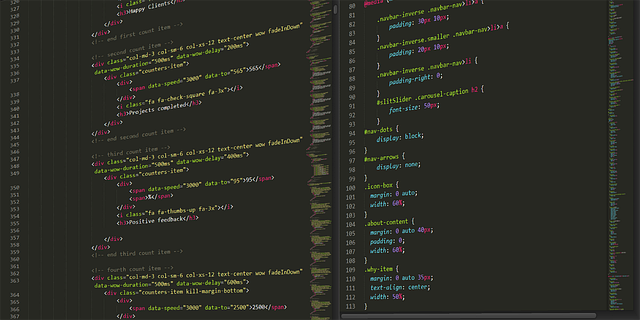Are you aware of the role that CRM and API play in the business environment? Have you ever wondered if CRM is the same as API? Or, are you perhaps curious about the relationship between the two? In the rapidly evolving world of technology, it is paramount to have an accurate understanding of these crucial elements to drive business growth.
A common misconception existing among many is that CRM (Customer Relationship Management) is an API (Application Programming Interface). According to Forbes and FastCompany, this perception creates a significant problem as it prevents businesses from leveraging the full potential of both these assets. CRM is essentially software that helps manage interactions with customers and prospects, while API acts as the middleman allowing two applications to communicate. The confusion between the two can undermine efficiency and productivity. Recognizing this problem, experts propose distinguishing clearly between CRM and API to enable effective utilization.
In this article, you will learn everything from the basics to the complexities surrounding CRM and API. Understanding the functionality, the differences, and the interaction can bring immense value to your business. This knowledge will aid you in making informed decisions concerning the application of CRM and API in your own business context.
We will also delve into case studies and practical examples to give you a tangible grasp of the subject matter. An exploration of the best practices and common mishaps will be provided to help you steer clear of issues and effectively apply CRM and APIs in your daily operations.

Understanding the Basic Definitions of CRM and API
CRM, or Customer Relationship Management, is a strategic approach for managing a company’s interactions with existing and potential customers. It uses data analysis about customers’ history to improve business relationships, focusing specifically on customer retention and driving sales growth.
API, an acronym for Application Programming Interface, is a set of rules determining how software components should interact. APIs make it possible for different software applications to communicate and share data with each other. It’s like a bridge connecting two separate, but necessary, components.
In essence, while CRM is not an API, APIs are often used within CRM systems to connect various applications and achieve seamless information flow. This highlights their interrelatedness when it comes to the operation of modern business tools.
Unmasking the Myth: Is CRM Really an API?
Understanding CRM beyond API
Customer Relationship Management (CRM) is often misconstrued as a mere Application Program Interface (API). While API forms a part of the CRM system, it encompasses a broader scope. CRM is a comprehensive strategy that businesses use to maintain and strengthen relationships with current and potential customers. It involves accumulating, analyzing and employing customer data to enhance business relationships and encourage customer loyalty.
Business enterprise applications
Microsoft 365 Apps for Enterprise
Enterprise Business apps generator
CRM systems allow businesses to manage customer data and interactions, track leads, perform marketing activities, and improve customer service. APIs, on the other hand, are sets of rules or protocols that dictate how software components interact. A CRM’s API allows other software systems to communicate with the CRM, pulling in data or pushing out data as required.
The Intersection and Divergence of CRM and API
While there is a certain degree of intersection between CRM and API, their depth and functionalities differ vastly. An API is a way for two separate software programs to communicate with each other. It is a kind of messenger that delivers a user’s request to a provider and then delivers the provider’s response back to the user. But CRM goes beyond being a mere messenger.
- CRM includes marketing automation: It automates repetitive tasks to enhance marketing efforts, such as emails, social media posts, and other website actions.
- CRM involves sales force automation: It prevents duplicate efforts between a salesperson and a customer. It also helps in managing customer interactions in an organized manner.
- Contact center automation: This is designed to reduce tedious aspects of a contact center agent’s job, helping customer service representatives focus more on the customer.
Therefore, one can assert that while CRM often utilizes APIs to streamline its operations and connect with other systems, it is more than just an API. CRM combines business processes, people, and technology to achieve one central goal: acquiring and maintaining satisfied customers. APIs cater to the technology aspect of this goal, but CRM caters to the strategy and business processes as a whole. Thus, APIs work within CRM, providing channels for communication and integration, but they do not define the entirety of CRM. Thus, equating CRM to an API would be a partial understanding of CRM’s expansive and strategic approach. It goes beyond the realm of technology alone, touching upon business strategies, growing customer relationships, and, ultimately, driving business success. So, dissecting the CRM phenomenon transcends beyond being just an API.
From Bystander to Player: The Role of APIs in the CRM Landscape
The Special Relationship between CRM and API
Can you imagine a scenario where all business communication happens seamlessly, without obstructions due to silos of information? This is no longer just a dream with the integration of Customer Relationship Management (CRM) systems and Application Programming Interfaces (APIs). CRM is not an API; they are two distinct systems that help businesses streamline operations. CRM is a strategy for managing an organization’s relationships and interactions with customers and potential customers. On the other hand, API is a set of rules and protocols for building and interacting with software applications. When converging these two, it’s a game-changer as it brings together the power of automated data collection, organization, and relationship building.
Untangling the Challenges
Despite the impressive advantages CRM and API integration offers, it’s not without its fair share of challenges. The primary issue lies in the difficulty of implementation. Not all CRMs and APIs are designed to be compatible, and the complexities can create potential roadblocks during integration. Methods and protocols vary across various platforms, and gaps in the technical know-how can hinder a smooth transition. Additionally, data security is another concern. Businesses have to ensure that their integrated system is secure from potential breaches, a factor that complicates the process further.
Exemplary Implementations and Success Stories
Nevertheless, successful CRM and API integrations outweigh the challenges. Dropbox, for instance, seamlessly integrates CRM and API to manage its massive user base. It utilizes CRM to understand the needs and behaviors of customers, while the API acts as the conduit for facilitating interactions between systems. Likewise, Amazon’s dynamic CRM system works cohesively with API to aid its multi-faceted operations. It successfully uses the integrated systems to manage its vast customer relations, enhancing the purchase experience, and offering improved customer services. These practices demonstrate the enormous potential of integrating CRM and API for businesses.
CRM vs API: A Comprehensive Analysis of Two Powerhouses in the Tech World
Is It Just a Technical Tool?
Have you ever considered how a CRM goes beyond the definition of just being an API? When we mention Customer Relationship Management (CRM), your initial inclination may be to reduce it to its mere technicality – an Application Programming Interface (API). However, restricting CRM to only being an API is like confining a symphony orchestra to the sounds of individual instruments. Yes, the technical interface forms a significant part of it but the overarching concept of CRM transcends this isolated perspective, embedding itself centrally into the heart of an effective customer-centric growth strategy.
The Main Dilemma
Often, organizations find themselves in a corridor of confusion when left to confront the enormous task of handling their customer interactions. With an increasing choice of channels and growing customer expectations, this task can become overwhelming. The decrepit methods of the past which involved simplistic records and manual processing are not just obsolete, they are disastrously ineffective in today’s competitive business landscape. Organizations find their customer interaction handling capacities fragmented, non-synchronized and ultimately, sub-standard. This is where CRM comes into play. It’s not just an API that takes data from one place and puts it in another; it’s a system that organizes and manages all customer interactions, systematically processes the captured customer data and leverages this data to strategize future interactions aimed at optimizing customer satisfaction and loyalty.
Incorporating CRM Innovatively
Consider the case of a globally-renowned coffee chain which successfully utilizes a CRM system not merely as an API, but as a means to enhance customer experience. The organization uses the CRM system to track customer preferences, purchase histories, and reward points, all updated in real time across all their outlets globally. When a customer places an order, the system provides customized suggestions based on the customer’s past purchases and existing reward points. This offers a personalized customer experience which delightfully stuns the customer while simultaneously fostering brand loyalty.
Further, there is the example of a leading online retailer who engineered their CRM to approach promotional activities in a personalized manner. Drawing from their CRM database, they streamline promotional emails based on user search history and past purchases, thereby eliciting a higher click-through rate.
Both instances shed light on how CRM, exceeding the boundary of just an API, morphs into a powerful tool for augmenting customer experience and propagating brand loyalty when utilized effectively. The keep-it-simple tag often associated with an ‘API’ is highly undermined when we see the multi-dimensional capabilities of a well-nurtured CRM system in these examples.
Conclusion
Isn’t it fascinating how, in our tech-driven world, terms like CRM and API can spark such a discussion? Indeed, it is clear that CRM is not an API but rather a powerful system widely used for managing a company’s interactions with current and potential customers. The API, on the other hand, acts as a bridge to facilitate communication between different software systems, which may include a CRM platform.
As we continue diving deeper into this digital realm, we encourage you to stay connected with us. With the fast-paced advancement in technology, there’s always something new to learn. Following our blog will ensure you remain updated with fresh insights, intriguing thoughts, and the latest trends all dedicated to breaking down complex tech jargon into easily understandable concepts.
Upcoming articles will further dissect and explain these complex systems. This way, you will always be a step ahead, comprehending how these technologies work and how they can be harnessed to improve your business operations. So why wait? Get ready to demystify technology, one term at a time, right here on our blog! Although CRM is not an API, their seamless integration can do wonders in streamlining your business processes by creating an efficient link between different software systems. This is just a sneak preview of what’s coming! Keep following us for these and much more.
F.A.Q.
FAQ
-
What is a CRM?
A CRM, or Customer Relationship Management, is a software system that helps businesses manage customer data, interactions, and relationships. It provides a streamlined platform for storing all information about prospects, customers, and business interactions.
-
What is an API?
An API, or Application Programming Interface, is a set of rules and protocols for building software applications. It serves as an intermediary that allows two applications to communicate and share data with each other.
-
Is a CRM an API?
No, a CRM is not an API. However, most CRM systems offer APIs so they can interface with other software applications and expand their functionality and integration capabilities.
-
How does a CRM’s API function?
A CRM’s API functions by allowing other software and applications to access the data stored in the CRM system. This allows businesses to integrate the CRM with their other systems and streamline workflows.
-
Why is a CRM’s API valuable?
A CRM’s API is valuable because it allows businesses to customize their CRM solutions, efficiently manage data, and integrate their CRM with other systems. This seamless integration enhances the user experience and improves efficiency by eliminating data silos.



